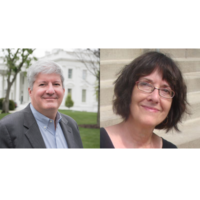
2017 CRA Distinguished Service and A. Nico Habermann Awardees Announced
Carol Frieze – A. Nico Habermann Award
Tom Kalil – Distinguished Service Award
The CRA Bulletin frequently shares news, timely information about CRA initiatives, and items of interest to the general community.
Subscribe to the RSS feed to stay connected.
Several activities sponsored by CRA and other organizations are designed to increase diversity in the computing field.

Carol Frieze – A. Nico Habermann Award
Tom Kalil – Distinguished Service Award
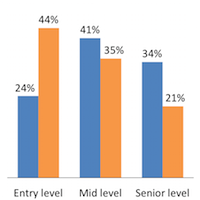
CERP recently extracted Web data to observe the career progression of women who had participated in the CRA-W’s 2008 or 2009 Career Mentoring Workshops (CMWs) compared to a sample of women who had never participated in CMWs. We obtained the comparison sample from a population of women who earned their Ph.D.s in computer science during the same time period as the participants. We collected current career information including job titles (e.g., associate professor) and job setting (e.g., academia vs. industry/labs) for both groups. We then categorized job titles as entry level (e.g., assistant professor, software engineer), mid level (e.g., associate professor, senior engineer), and senior level (e.g., professor, principal program manager), collapsed across job setting. To test for a systematic difference in job rankings between workshop participants and the comparison group, we ran a 2 (Group) x 3 (Job Title Rank) Chi-squared test and found a statistically significant difference in rankings across the two groups, χ2 (2, N = 181) = 8.46, p < 0.05. Specifically, CMW participants were less likely than non-participants to be in an entry level position, p < .05, and more likely to be in a senior level position than non-participants, p < .05.
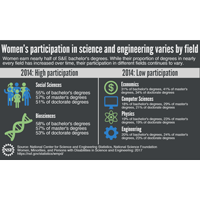
Yesterday, the National Center for Science and Engineering Statistics (NCSES) announced the release of the 2017 Women, Minorities, and Persons with Disabilities in Science and Engineering (WMPD) report, the federal government’s most comprehensive look at the participation of these three demographic groups in science and engineering education and employment.
CRA wishes to thank the computing departments who distributed CERP’s Data Buddies survey during the fall of 2016! The collective effort of these departments provides data for CERP’s research on students’ experiences and successes in computing degree programs.
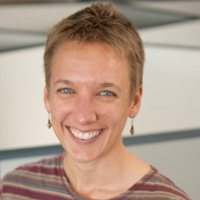
Krintz believes it is important in computing research to push technology forward by including people with diverse perspectives and ideas. To do that, she supports increasing underrepresented minority participation in computing. “I think it benefits both society and technology in general. Personally, it’s just so inspiring to see young people have new ideas, get excited, and want to go out and change the world.”
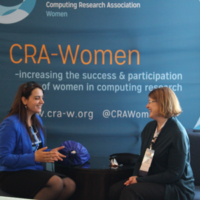
CRA-Women invites nominations for the Borg Early Career Award (BECA). he award honors the late Anita Borg, who was an early member of CRA-W and is inspired by her commitment to increasing the participation of women in computing research.
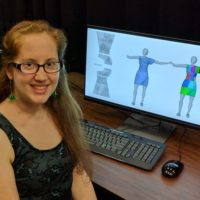
Tanya Amert, a computer science Ph.D. student at University of North Carolina, Chapel Hill, found herself drawn to computer science because she enjoyed figuring out how things work. At 13 years old, she was a big fan of the Neopets website and online community. Amert noticed some users had customized homepages, and her interest grew even more. Despite not knowing any HTML at the time, she learned how to look at the source code and figured out how to change the color of the scroll bar within the CSS. “I discovered that specific lines of HTML made that happen. And I thought that was mind boggling and awesome.”

The mission of the CRA Committee on the Status of Women in Computing Research (CRA-W) is to increase the success and participation of women in computing research and education at all levels. There are several ways you can get involved by mentoring students, submitting proposals and sharing these opportunities with your colleagues and students.
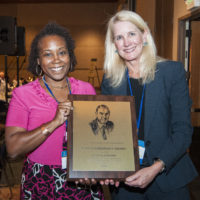
In February, Ayanna Howard from Georgia Institute of Technology received the 2016 A. Nico Habermann Award for her sustained commitment to increasing diversity in computing. Howard is currently a CRA-W board member, and at Georgia Tech, she has provided research opportunities to dozens of undergraduates – more than 75% of whom are underrepresented minorities or women, and a majority of these students have gone on to graduate school. Nominations for the 2017 A. Nico Habermann Award are due on Friday, December 9.
Today, the White House Office of Science and Technology Policy (OSTP) shared a summary of actions to take to promote diversity, equity, and inclusion in science and technology. The post titled, “Raising the Floor: Sharing What Works in Workplace Diversity, Equity, and Inclusion,” was written by Megan Smith, the U.S. Chief Technology Officer, and […]
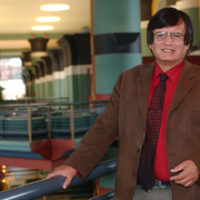
Recently, the American Association for the Advancement of Science (AAAS) named computational mathematician Richard Tapia from Rice University, the recipient of the 2016 AAAS Public Engagement with Science Award. The award recognizes Tapia’s “remarkable career blending world-class scholarship, admirable mentoring and profound contributions to science, technology, engineering and mathematics education and public engagement.”
The University at Buffalo (UB) Department of Computer Science and Engineering is celebrating its 50th anniversary this academic year. It has chosen this occasion to honor successful women in computing with a year-long speaker series. The Distinguished Speaker Series highlights several CRA board members.
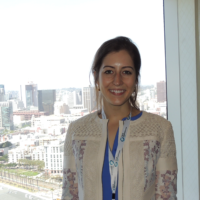
From an early age, current Ph.D. student and 2016 Graduate Cohort Workshop (Grad Cohort) attendee Caroline Trippel had a positive image of women in computing. Her mother earned an undergraduate degree in math, a Master’s degree in computer science, and currently works as an embedded systems software engineer.
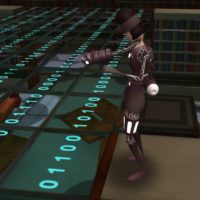
Computer science and education researchers from North Carolina State University and the University of Florida, both CRA member institutions, are launching an initiative that will use a custom-designed video game to boost both computational thinking in middle school science classrooms and foster both gender and racial diversity in computing.
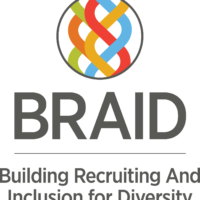
The BRAID (Building, Recruiting And Inclusion for Diversity) initiative is a joint project led by the Anita Borg Institute (ABI) and Harvey Mudd College. The BRAID project addresses the lack of diversity in computer science departments and specifically looks at the underrepresentation of women and racial/ethnic minorities.
Would your school like to participate? BRAID is now accepting applications for new BRAID affiliate schools, and proposals are due by 5 pm on December 30, 2016.
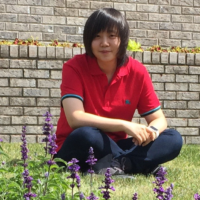
For Volcano Kyungyoon Kim, current Ph.D. student and 2016 Graduate Cohort Workshop (Grad Cohort) attendee, choosing to study computer science was an easy decision. She knew since elementary school that she would have a career in computing. Volcano comes from a computer science family – her father is a computer science professor, her mother also has a degree in computer science, and now her younger brother is currently pursuing a master’s degree in computer science. “Every single one of them is in computer science. So I never really thought of anything else. My parents think that it’s the most exciting and valuable field of study and it will lead to a great career in the future.”
While this influenced her enough to begin studying computer science in college, during her first two years she wasn’t totally convinced that it was a perfect fit for her. It wasn’t until Volcano discovered the flexibility of the field and its interdisciplinary nature that she was completely hooked. “There was a moment later on when I thought this is really perfect for me. It is not only about computer science, it is about applying it to all the other areas. If you have an interest in art, having a computer science background can boost your art skills or it can even open up a new art genre such as 3D painting in a virtual reality. Computer science is like a magic powder that you can add to other fields. ”
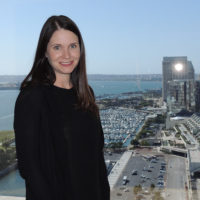
The 2016 Graduate Cohort Workshop (Grad Cohort) brought together more than 30 accomplished speakers and 550 female graduate students in computing. Kim Hazelwood, who leads a performance and datacenter capacity engineering and analysis team within Facebook’s infrastructure division, was one of the speakers who shared her unique perspective with the attendees. Kim has always had an interest in technology and a love for math. Like many undergraduate students, Kim didn’t take any computer science classes in high school. However, she took a leap and declared computer engineering as her major heading into her undergraduate degree at Clemson University. “First time was a charm on actually picking the right area for me,” she explained.
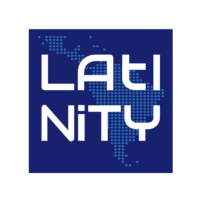
The Latinas in Computing (LiC) community was established with the help of The Anita Borg Institute for Women in Technology (ABI) at the 2006 Grace Hopper Celebration of Women in Computing (GHC). Recognizing the status of Latinas as a double minority in North America, this community defines and implements strategies to improve the participation of the current and next generations of Latinas in technology. These dual strategies complement the work done by the Coalition to Diversify Computing (CDC) that focused on the recruitment and retention of minority students in computing-based fields in North America, and the work done by the Computing Research Association’s Committee on the Status of Women in Computing Research (CRA-W) to grow the research pipeline of women in computing. National Science Foundation (NSF) data shows Hispanic or Latino enrollment increased from 7.2% in 2002 to 9.9% in 2012, but the hiring of underrepresented minorities seems to be “stuck in neutral.”

CRA’s Committee on the Status of Women in Computing Research (CRA-W) recently announced a new program for undergraduates, the CRA-W Grace Hopper Celebration (GHC) Research Scholars Program. The GHC Research Scholars program brings undergraduate women to the annual Grace Hopper Celebration. The purpose of this program is to provide attendees with an unique experience, providing them a mentor, networking opportunities, and advising.
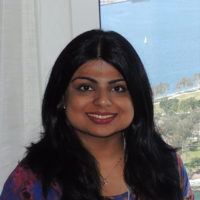
Bushra Anjum is a self-described “adventure seeker” in addition to her day job in computing.
“I’m into extreme sports–I like jumping out of planes or off of cliffs. I am an adventure seeker, at the bottom of my heart. So anything that sounds like an adventure to me –I will jump at that.”
When Anjum is not jumping out of a plane or off a cliff, she works as a software and research engineer at Amazon, Inc. in San Luis Obispo, Calif. Specifically, Anjum has expertise in agile software development for large-scale distributed systems, with a special emphasis on system design and development for highly scalable, fault-tolerant systems. At CRA-W’s 2016 Graduate Cohort Workshop (Grad Cohort), I had the wonderful opportunity to talk with Anjum, who described why she has a passion for CRA-W and increasing diversity in computing.
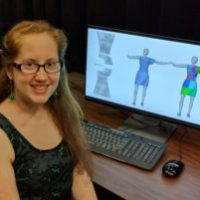
During this Virtual Undergraduate Town Hall event, students will learn about cutting edge research in the field of computing and have the opportunity to ask distinguished computer scientists questions. The state of the art in cloth simulation can produce highly realistic cloth, but requires extremely high computation time, on the order of hours or even days.

Again and again we hear that earning computing degrees leads to one of the highest starting salaries for college graduates and almost a guaranteed job after graduation. This information is supported by data from the National Association of Colleges and Employers who report computer science graduates have the second highest starting salary ($61,321 this year) and the highest full-time employment rate (76% within six months of graduation). A blog post from the Computing Community Consortium in March highlights 2016 Bureau of Labor Statistics job projection results, which found that computing occupations are projected to account for 73% of all newly-created STEM jobs during the decade (488,500 jobs), and 55% of all available STEM jobs, whether newly-created or available due to retirements (1,083,800 jobs over the decade). All of this isn’t new information. Many people are aware that the booming tech industry can be a ticket to job security and comfortable living. Data from the National Science Foundation in 2014, shows that there are approximately 17.8% of women studying computer science at the undergraduate level. So why is it every CS classroom I am in is filled with bright-eyed, eager young men, but a dismal number
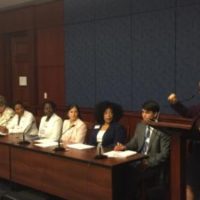
At a briefing of the congressional Diversity in Tech Caucus, hosted by Sen. Amy Klobuchar (D-MN) in the Capitol yesterday, CRA-W board member Rebecca Wright explained why efforts to increase the participation of women and underrepresented minorities in STEM fields — particularly computing — were worthy of continued Federal support. Wright, a professor of computer science at Rutgers University, was a member of a panel of experts assembled by the Diversity in Tech Caucus to explore the issue of diversity within the research and STEM Education communities.

CRA-W and CDC are jointly soliciting proposals for discipline-specific mentoring workshops. The goal of these workshops is to provide career mentoring and networking opportunities in the context of a specific research area. Workshop proposals should include coverage of technical topics such as important recent results and future related research directions. These workshops are commonly co-located with major conferences in the sub-field. Our vision is that we will offer seed funding for workshops that will later be sustained by the community.

In recent decades, there have been many Women In Science and Engineering (WISE) initiatives aimed at increasing the participation of women in these fields. In computer science and engineering, the percentage of women pursuing degrees and careers has remained relatively low. According to CRA’s annual Taulbee Survey of Ph.D. granting institutions, less than 15 percent of undergraduate computer science degrees were awarded to women in the 2013-14 academic year [1]. Given the significant increases of women in other traditionally male dominated fields such as law and medicine in the past 50 years [2], computing’s persistent low representation of women is rather disappointing, to say the least. Women’s low participation is also alarming when we consider the increasing number of jobs in computing, as well as the positive impact of improving gender diversity on innovation in research settings [3] and on collective intelligence [4]. So the question becomes, how do we change things?
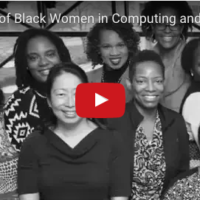
On January 8-10, 2106, NSF sponsored the Inaugural summit of Black Women in Computing community leaders. This workshop is part of an effort to build a robust community to support Black women in computing and by extension, all those who are persisting in the field, either through their education or careers.
This video narrative showcases the positive experiences of women in this community who were workshop participants. Please share the video with your students – https://youtu.be/2terTfzuLxA.
Click here to view the final workshop report, Black Women in Computing: A Research Agenda.
DREU is a highly selective program that matches promising undergraduate women and underrepresented groups with a faculty mentor for a summer research experience at the faculty mentor’s home institution.

CERP is thrilled to launch its new data visualization website displaying Data Buddies data. Dr. Ron Metoyer, Associate Professor of Computer Science and Engineering at the University of Notre Dame designed the website, alongside a team of student developers and CERP Research Scientist, Dr. Burçin Tamer.
January is National Mentoring Month, a great time to learn how mentoring can help support students and professionals in computing research, and in Science, Technology, Engineering, and Mathematics (STEM) more generally. Mentoring is especially important for individuals in STEM from underrepresented groups in promoting persistence and success in education and professional settings. Effective mentoring programs help mentors and mentees consider various attributes of their identities and experience, like race, ethnicity, socio-economic status, and educational background, which may influence their persistence and success. Although effective programs aim to support the whole person, gender identity and expression and sexuality orientation are often overlooked.
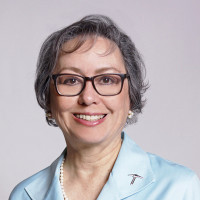
In the early stages of her career, Ann Quiroz Gates felt how many other students of underrepresented groups often feel – not sure she would be able to receive an advanced degree in computing. Over time, her confidence increased; she earned her Ph.D. and has committed to making sure others also succeed in the computing field.
